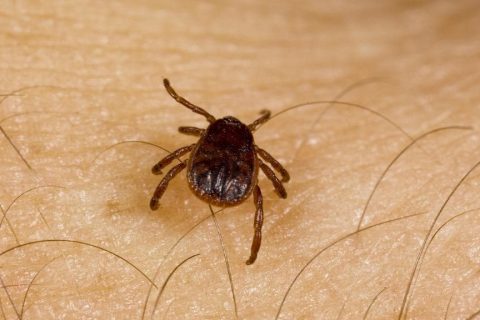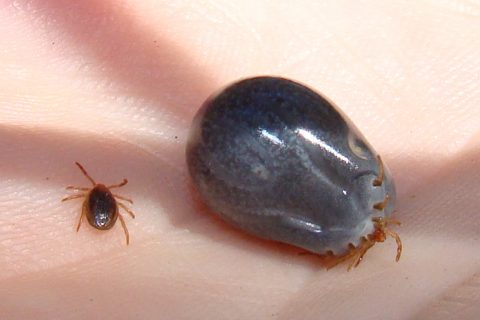Any Questions? Call us today!
All You Need To Know About Ticks


All You Need To Know About Ticks
Ticks are very small yet very dangerous insects that are related to spiders. They carry some dangerous microbes, but they are very easy to miss and have painless bites. Plus, they also like to climb up underneath the clothes and to bite in hard to find places. They are available in small, medium or large sizes, depending on the species.
Ticks do not jump, they do not fly nor drop from trees onto your head and back. If you ever find one there, it got attached to your foot and then crawled up there. They are around the size of a poppy seed and quite difficult to spot. Their bites are usually painless, but some people do get swellings, blistering or itchiness.
They are usually found in areas with deep or overgrown vegetation, where they can sneak on animals and suck their blood as a source of food. While they usually live on fields and forests, they can also be found in parks and home gardens. When people are walking, running or playing in the nature, they can easily brush against something they’re on, and the tick will climb on their skin and bite.
Are Ticks Dangerous?
Ticks do carry microbes that can cause diseases, and they have become more common in the past decades. One of the reasons is the increase in deer populations, which allowed them to extend into semi-urban areas. Among the microbes transmitted by ticks we can find the Lyme disease bacteria, the Babesia protozoa, the Anaplasma, Ehrlichia and even viruses that cause encephalitis. So tick bites are not only unpleasant, but they can also make you very sick.
Actually, the only way to get the Lyme disease is by being bitten by a deer tick. The good news is that even if you were bitten, you have 24 hours to find and to remove the tick before the disease is transmitted. So if you live in an area constantly infested with ticks, make sure to always check your entire body after going outside, and to call a pest control company if the problem is in your garden. Also go to a doctor immediately if you find a tick on your skin. Do not try to remove it yourself, as it might get broken and parts of it will still be in your body, causing an infection.
The Symptoms of Lyme disease
The first sign would be a distinctive circular rash where the bite has occurred and symptoms similar to those of flu: muscle or joint pain, fever, headaches, neck stiffness and tiredness. If not treated in time, the Lyme disease can lead to more serious symptoms and it can affect the nervous system and the heart.
How To Prevent Tick Bites
The easiest way to prevent them from happening would be to not go outside in the nature, woods or other places where ticks might live. However, this is nearly impossible, especially in the summer time when people like to go hiking or to have outdoor picnics.
The second best way would be to wear long clothes, which is also not possible in the hot days of summer. The third and best option would be to wear clothes with built-in tick repellent and to spray some on your exposed skin too. This is highly recommended when going on hikes or doing outdoor activities in areas known to be infested with ticks. You should also use specific tick protection products for your pets, especially for dogs that are running freely in the nature.
If the ticks are found in your back yard, then it’s time to call a specialist to get rid of the infestation. It’s better to treat the root cause directly instead of always having to wear repellent.
Frequently Asked Questions
Can ticks live indoors?
If they get caught on a pet, yes, they can also live indoors for 24 hours or even a few days, depending on the species.
Can they survive cold weather?
Yes, they can survive freezing temperatures and some species even emerge during the winter
How do they transmit disease?
Ticks get attached to humans or animals and then they seek for a secured place to feed peacefully. They pierce the skin and insert the feeding tube, and can stay attached there for days. While sucking the blood they are also spitting saliva inside the host, and if they carry any viruses, they will be transmit them.
How small are they?
Black-legged ticks are the smallest, and their larvae are nearly microscopic. But luckily, these tiny ticks do not transmit diseases. The next stage, the nymphs are about the size of a poppy seed and they are the most likely to transmit the Lyme disease. The final stage (the adults) have the size of a sesame seed, making them easier to spot and remove from the skin.
Safeguard Pest Control
Whether you have issues with termites, lawn grubs, mice, rats, geckos, fleas, mosquitoes, flies, bed bugs, Silverfish, pantry pests or ticks, we are here to help! We are in business for more than 30 years now and had hundreds of satisfied customers all over the Sunshine Coast of Australia.
Our technicians are well trained and experienced, and we only use substances that are certified and safe for humans, for pets and for the environment. We offer pest control solutions to both residential and commercial areas, as well as to schools and hospitals.
Get Rid of Ticks Now!
If your home or yard are seriously infested by these insects, then it’s time to call a specialist! Book your Safeguard ticks treatment now by calling 07 5477 6675 or emailing info@safeguardpestcontrol.com.au and allow us to protect your family against these nasty insects.
Use the form below to request a Free Estimate . Requests are answered within 4 hours or less.
